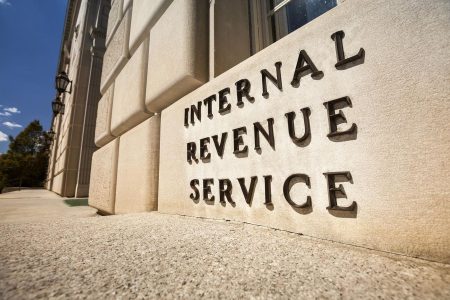The U.S. Department of the Treasury and the IRS have released final regulations on reporting requirements for brokers of digital assets.
This is not a new tax—owners of digital assets have always been subject to tax on the sale or exchange of digital assets. However, under the Infrastructure Investment and Jobs Act (IIJA), reporting requirements similar to those that already apply to traditional financial services are now in place to help taxpayers file accurate returns and pay taxes.
Specifically, the final regulations require brokers to report gross proceeds on the sale of digital assets beginning in 2026 for all sales in 2025. Brokers will also be required to report information on the tax basis for certain digital assets starting in 2027 for sales in 2026 (more on that in a moment).
Sales And Reporting
The sale of a digital asset includes disposing of a digital asset in return for cash and other digital assets. A sale of a digital asset also includes disposing of a digital asset in return for certain broker services, securities, and other property otherwise subject to reporting and certain real estate on or after January 1, 2026. Finally, a sale of a digital asset includes a payment by a party of a digital asset to a PDAP in return for the payment of that digital asset, cash, or a different digital asset to a second party, provided that the transaction is not otherwise a sale (PDAP sale).
The final regulations apply to brokers that take possession of the digital assets being sold by their customers, including operators of custodial digital asset trading platforms, certain digital asset-hosted wallet providers, digital asset kiosks, and certain processors of digital asset payments (PDAPs).
A broker is not required to report a sale for a customer that is an exempt recipient. The final regulations added U.S. digital asset brokers (other than certain registered investment advisers) to the list of exempt recipients so long as the broker obtains a certification on a properly completed exemption certificate—usually Form W-9—that the customer is a U.S. digital asset broker.
If more than one broker effects a sale of a digital asset on behalf of a customer, the broker responsible for first crediting the gross proceeds on the sale to the customer’s wallet or account is required to report the sale. The additional broker is not required to report the sale if, before the sale, the broker obtains a certification on a properly completed exemption certificate that the broker first crediting the gross proceeds on the sale is a U.S. digital asset broker (other than a registered investment adviser).
Form 1099-DA
The IRS has created a new tax form to ensure consistent reporting. Earlier this year, the IRS released a draft of Form 1099-DA, Digital Asset Proceeds From Broker Transaction, available on the IRS website. Here’s a look:
(You can check out the full-sized form and the instructions here.)
The form followed the proposed regulations published in 2023. The IRS now says that the final form is “soon-to-be released.”
Key Dates
Reporting will be phased in over time. Here are the key dates:
- Brokers must report gross transaction proceeds for sales made on or after January 1, 2025.
- Brokers must report the basis of certain transactions made on or after January 1, 2026.
- Real estate professionals treated as brokers must report the fair market value of digital assets paid by buyers and received by sellers in real estate transactions with closing dates on or after January 1, 2026.
- For certain stablecoins and non-fungible tokens (NFTs) sales, brokers may choose to report the transactions on an aggregate basis to the extent the sales exceed respective de minimis thresholds.
- A separate de minimis—meaning of little value—threshold also applies for PDAP sales.
Penalty Relief
The IRS issued Notice 2024-56, providing brokers transitional relief. Specifically, for transactions occurring in calendar year 2025—those reported in 2026—the IRS will not impose penalties for failure to file and to furnish Forms 1099-DA if the broker makes a good faith effort to file the Forms 1099-DA and furnish associated statements correctly and on time. (Good faith efforts do not include any filing of returns or furnishing of payee statements made by the broker after the later of the date that the IRS first contacts the broker concerning an examination of such broker or one year after the original due date for filing such returns.)
The notice also provides relief to brokers from backup withholding obligations and associated penalties for all transactions that occur in 2025.
The IRS says it is aware that brokers subject to section 6045 reporting for digital asset sales may experience challenges in obtaining certified taxpayer identification numbers (TINs) from all existing customers. So, for 2026, the IRS will permit brokers to rely on TINs provided by payees that are not certified if those uncertified TINs were provided by payees that opened accounts with the broker before January 1, 2026, and if the broker, before the transaction is complete, submits the payee’s name and TIN combination to the IRS’s TIN Matching Program and receives a response that the combination matches the IRS records.
The final regulations require brokers to report sales of digital assets, including sales of digital assets that are disposed of in consideration for specified NFTs. The IRS defines a specified NFT as a digital asset that is indivisible—that is, the digital asset cannot be subdivided into smaller units without losing its intrinsic value or function—and unique as determined by the inclusion in the digital asset itself of a unique digital identifier, other than a digital asset address, that distinguishes that digital asset from all other digital assets (unique digital identifier). As part of the relief under the notice, backup withholding under section 3406 will not be required on any digital asset sale effected by a broker where the reportable proceeds is a specified NFT until further guidance is issued.
Temporary Reporting Exceptions
The IRS also issued Notice 2024-57, which identifies transactions for which brokers are not required to file Forms 1099-DA or associated payee statements until there is further guidance. (This reporting exception does not apply to rewards or other compensation earned in these transactions.)
The identified transactions are:
- Wrapping and unwrapping transactions,
- Liquidity provider transactions,
- Staking transactions,
- Transactions described by digital asset market participants as the lending of digital assets,
- Transactions described by digital asset market participants as short sales of digital assets and
- Notional principal contracts.
What’s Missing?
The final regulations do not include reporting requirements for brokers, commonly known as decentralized or non-custodial brokers, who do not take possession of the digital assets being sold or exchanged. The Treasury Department and the IRS intend to provide rules for these brokers in a different set of final regulations.
Tax Treatment
The IRS considers cryptocurrency a capital asset. In 2014, the agency issued guidance making it clear that capital gains rules apply to any gains or losses.
- If you buy and sell cryptocurrency as an investment, you’ll calculate gains and losses the same way you buy and sell stock.
- If you treat cryptocurrency like cash—spending it directly for goods or services, or using it to buy other digital assets—the individual transactions may result in a gain or a loss.
For tax purposes, you figure your capital gains or losses by determining how much your basis—typically, the cost you pay for assets—has gone up or down from the time that you acquired the asset until there’s a taxable event. A taxable event can include a sale, gift, or other disposition.
If you hold an asset for more than one year before a taxable event, it’s considered a long-term gain or loss. And if you hold an asset for one year or less before a taxable event, it’s considered a short-term gain or loss.
And while cryptocurrency goes up and down, you care the most about the beginning and the end—what happens in the middle doesn’t count. That’s because when cryptocurrency dives for tax purposes, that doesn’t equal a realized loss. Similarly, when it goes back up in value, that doesn’t equal a realized gain. To realize a gain or a loss for tax purposes, you must do something with the asset, like sell or otherwise dispose of it.
At tax time, you’ll report any realized gains and losses on Schedule D. You don’t need to file a Schedule D if you don’t have any realized gains or losses—even if the value changes, if there’s no sale or disposition, there’s nothing to report.
Losses May Be Limited
Like other capital assets, if any realized losses from digital assets exceed any realized gains, you have a capital loss. You can claim up to $3,000 (or $1,500 if you are married filing separately) of capital losses in a tax year—the amount of your loss offsets your taxable income. However, if your losses exceed those limits, you can carry them forward to later years, subject to certain limitations and restrictions.
Here’s how that works. Let’s say you realized $3,500 in net capital losses in 2022. You can deduct $3,000 in capital losses for the 2022 tax year—the return you’re filing now—and carry forward the remaining $500 in losses to use on next year’s tax return.
Something Isn’t Nothing
There’s been speculation about how to treat cryptocurrency that has declined quickly to the point of almost being worthless. It’s been suggested that if your cryptocurrency has substantially dropped in value, you can claim it as a loss under section 165.
Last year, the IRS Office of Chief Counsel issued Memorandum 202302011. The “non-taxpayer specific advice” confirmed two things:
- If you lose most of the value of your cryptocurrency, it’s not worthless—it still has value. That means that you don’t have a sustained loss under section 165.
- Even if you sustained an actual loss under section 165, the loss would be disallowed because section 67(g) suspends miscellaneous itemized deductions for taxable years 2018 through 2025 (some exceptions apply).
The memorandum references Lakewood Assocs. v. Commissioner, claiming, “The mere diminution in value of property does not create a deductible loss.” In other words, if it’s not wholly worthless, you still own something, and there’s no realized loss.
It’s worth re-emphasizing that the IRS memo is a response to a “request for non-taxpayer specific advice,” meaning it “should not be used or cited as precedent.” It doesn’t carry the same weight as a law or regulation. However, it does offer insight into how the IRS regards an issue, and that’s valuable information.
Comments And Response
“Because of the bipartisan Infrastructure Investment and Jobs Act, investors in digital assets and the IRS will have better access to the documentation they need to easily file and review tax returns,” said Acting Assistant Secretary for Tax Policy Aviva Aron-Dine. “By implementing the law’s reporting requirements, these final regulations will help taxpayers more easily pay taxes owed under current law, while reducing tax evasion by wealthy investors.”
As is the norm, the IRS held a public hearing and accepted public comments on the proposed regulations—and boy, did taxpayers have comments. The IRS received more than 44,000 comments in response to proposed regulations. That’s… a lot. And while there’s a lot of information in these rules and notices, the IRS anticipates issuing additional rules later this year, including establishing reporting requirements for non-custodial brokers, consistent with statutory requirements.
It’s also a lot for tax professionals to process quickly. Check back with our Forbes team for further comments and analysis.
Read the full article here










